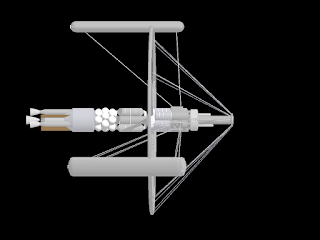A few weeks ago, I watched Avatar: The Way of Water, and I was rather disappointed at the reduction in linguistic worlbuilding effort compared to the original Avatar. I'll do a proper review on that at some point when I am not in the middle of an interstate move with three children, but in the meantime I want to talk a bit about properly alien languages--the sort that cannot be accurately pronounced, or produced at all, by unassisted human actors, because they use sounds that humans can't make, or signs that we can't perform, or completely inaccessible modalities. Specifically, I want to talk about how these show up in movies and TV shows--or rather, how they don't show up.
The Star Wars universe numerous aliens that produce non-human-like speech--most notably, Wookies--but as portrayed on screen, it's all gibberish. The Prawns from District 9 (<- Amazon affiliate link) have non-human-like speech... but again, it's just gibberish. Star Trek: Picard, season 3 features a few lines of subtitled non-humanoid dialog, in a receptive-multilingualism situation in conversations between Vadic and her crew... but it's just gibberish, despite Star Trek being a franchise that has already shown willingness to invest in conlangs for Vulcan and Klingon. And Star Trek: Discovery, season 4 (proper review coming later) features a modally-alien language encoded in a combination of spatially-and-temporally distributed visual signals and chemical messaging... but it's just gibberish!
Clearly, modern TV and movie productions are willing to invest in producing proper conlangs, and they are willing to pay audio and visual artists to produce asemic representations of Truly Alien Languages; so why have we not yet seen these two things combined? Even the Avatar franchise, which introduced the Na'vi language, seems to have completely punted on the language of the Tulkun, which to all appearance is whalesong-esque (you guessed it!) asemic gibberish!
Two plausible reasons have been suggested to me by other members of the Language Creation Society:
I fear studios wouldn't be interested in commissioning a conlang they wouldn't be able to use for promotional purposes, unlike, for instance, High Valyrian.--Baptiste Faussat
I interpret "promotional purposes" in this sense as meaning "that fans can learn"--but most of the conlangs that, e.g., David Peterson has been comissioned for have never developed huge fan speaker communities, or any fan speaker communities, and there frequently isn't enough public material for that to even be possible, yet such commissions continue.
I feel like a non-human-pronounceable conlang in a movie would be a nightmare of going back and forth with sound designers and such.
--George Corley
As opposed to just telling the designers to go wild once, and not requiring any back-and-forth with multiple people. That seems... unfortunately plausible. It's also entirely plausible that it has just never crossed the mind of any producer or director that anyone would ever care, and it probably won't until there is some initial breakthrough production that demonstrates it. I had hoped that Avatar: The Way of Water would turn out to be such a production, but it failed me. So, the opportunity to be the first is still open!
At the moment, I am putting my hopes in Project Hail Mary, which is currently in pre-production to star Ryan Gosling as Ryland Grace. (See also my previous linguistic review of the book, along with other works by Andy Weir.) Decoding the Truly Alien Language in this story is in fact a significant feature of the plot, so I rather hope that they will see fit to actually produce a language to decode! But given my disappointment with Avatar: The Way of Water, I kinda worry that they'll make a hash of it after all unless someone pushes for them to do it right. So, here's my public plea to Phil Lord, Christopher Miller, Ryan Gosling, Andy Weir, and anyone else involved in the production: please, hire a conlanger for Eridian!
(Incidentally, I'm available! Contact me! But soliciting applications through the LCS is also an excellent option!)
Stay tuned for a future blog post where I start working out details of a canon-compatible Eridian language, after I dig my copy of Project Hail Mary-the-book out of whichever box it ended up in so I can re-extract all the details that I didn't quote in my last review. I can probably even build off my previous work on Fysh A and Tjugem to produce synthesized speech samples for Rocky, though I admit I have no idea whether that would be considered helpful or annoying by any potential film sound design department that one might end up going back-and-forth-with....
If you liked this post, please consider making a small donation!





























